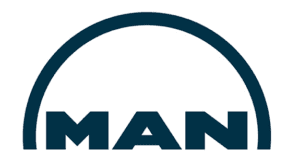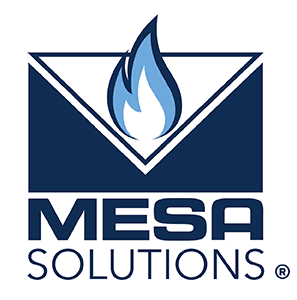Reading Now
- Generational Shift—Data Centers Bring Change to Energy Landscape
- THE BIG PICTURE: How Much Power Will Data Centers Consume? (Infographic)
- DeepSeek Sparks Demand Debate, While Chevron Plans Gas-Fired Plants for Data Centers
- Nuclear-Gas Synergy: Oklo and RPower Unveil Phased Model to Address Data Center Power Demands
- Data Centers Consume 3% of Energy in Europe: Understand Geographic Hotspots and How AI Is Reshaping Demand
- Google Invests in Partnership to Develop Energy Assets at Data Center Parks
- ExxonMobil Planning Large Gas-Fired Plant to Serve Data Centers
- Understanding Uptime Institute’s Tier III Standard: A Guide to Data Center Electrical System Design
Generational Shift—Data Centers Bring Change to Energy Landscape
Deals involving the data center sector are occurring regularly, as tech companies make moves to ensure they have a reliable supply of power for their energy-intensive operations. Several generation types, both thermal and renewable, are being touted and pursued by groups involved with artificial intelligence (AI), data management, and cloud computing. Google, Microsoft, Amazon Web Services, Meta, and others are looking at nuclear power, including small modular reactors (SMRs), along with renewable energy resources. Some companies are signing power purchase agreements (PPAs) with operators of natural gas–fired power plants, and analysts say demand for power from data centers could keep some coal-fired power plants online past their scheduled retirement dates. POWER has talked with several energy industry leaders over the... (more...)
THE BIG PICTURE: How Much Power Will Data Centers Consume? (Infographic)
Driven by artificial intelligence (AI), cloud computing, and the digital transformation, U.S. data centers consumed an estimated 150 TWh of electricity in 2023—equivalent to around 3% of the nation’s power demand. Globally, data center demand hovered at 340 TWh in 2023—about 1.3% of worldwide electricity use. Multiple sources project this demand will surge dramatically through 2030, albeit at varying rates, amplifying the pressure on power infrastructure and sustainability efforts. Key Data Center Markets: Clusters of Consumption The U.S. remains a global leader in data center capacity, hosting half of the world’s 10,655 data centers as of early 2024. Notable regions include Northern Virginia, Dallas-Fort Worth, Phoenix, Chicago, and Silicon Valley. Virginia’s so-called “Data Center Alley” alone hosts more than... (more...)
DeepSeek Sparks Demand Debate, While Chevron Plans Gas-Fired Plants for Data Centers
The debate over just how much power will be needed to support the artificial intelligence (AI) industry became heated when a Chinese company said it has a low-cost AI model that could upend the sector’s energy needs. DeepSeek created a global stir after releasing information that said the company’s DeepSeek-V3 required less than $6 million worth of computing power from Nvidia H800 chips. The company’s AI Assistant, which is powered by DeepSeek-V3, already has surpassed rival ChatGPT to become the top-rated free application available on Apple’s app store in the U.S. COMMENTARY The news brought a market rout for chipmaker and AI leader Nvidia, which lost $589 billion in market value on Jan. 28. It also “calls into question the... (more...)
Nuclear-Gas Synergy: Oklo and RPower Unveil Phased Model to Address Data Center Power Demands
Advanced nuclear technology firm Oklo is partnering with Texas-based prime and backup solutions company RPower to roll out an innovative “phased energy model” that will combine natural gas and nuclear to offer a scalable and sustainable turnkey solution for data centers. The companies on Jan. 17 said they signed a memorandum of understanding (MOU) to explore the model, which targets large energy users looking for an immediate and reliable source of power but remain committed to a transition to long-term decarbonization. “Once implemented, the phased power model is expected to work in three stages,” said the companies in a joint statement. At first, RPower’s natural gas generators will be deployed within “approximately 24 months, depending on site conditions, to meet... (more...)
Data Centers Consume 3% of Energy in Europe: Understand Geographic Hotspots and How AI Is Reshaping Demand
The rapid rise of data centers has put many power industry demand forecasters on edge. Some predict the power-hungry nature of the facilities will quickly create problems for utilities and the grid. ICIS, a data analytics provider, calculates that in 2024, demand from data centers in Europe accounted for 96 TWh, or 3.1% of total power demand. “Now, you could say it’s not a lot—3%—it’s just a marginal size, but I’m going to spice it up a bit with two additional layers,” Matteo Mazzoni, director of Energy Analytics at ICIS, said as a guest on The POWER Podcast. “One is: that power demand is very consolidated in just a small subset of countries. So, five countries account of over 60%... (more...)
Google Invests in Partnership to Develop Energy Assets at Data Center Parks
Technology companies are looking at various ways to source electricity for energy-intensive data centers. Google on Dec. 10 unveiled a plan to join with several partners in supporting power generation, as part of what could be a $20 billion investment to develop industrial parks that would have renewable energy and energy storage built alongside those data center facilities. Google on Tuesday said that it, along with TPG Rise Climate and other investors, would invest in clean energy developer Intersect Power. Intersect, based in Houston, Texas, has raised more than $1 billion in equity and $5 billion in project finance as part of its effort to connect solar, wind, and battery energy storage projects directly to sites that require massive electricity... (more...)
ExxonMobil Planning Large Gas-Fired Plant to Serve Data Centers
ExxonMobil is preparing to join the power generation business, seeing an opportunity to support the electricity supply for energy-intensive data centers. The company on Dec. 11 said it is designing what was referred to as a “massive” natural gas-fired power plant that would be dedicated to producing power for data centers. Reports said the facility could have generating capacity of more than 1,500 MW. Darren Woods, Exxon’s chief executive, in a media call on Wednesday said, “There are very few opportunities in the short term to power those data centers and do it in a way that at the same time minimizes, if not completely eliminates, the emissions.” There currently are no U.S. natural gas-fired power plants with carbon capture... (more...)
Understanding Uptime Institute’s Tier III Standard: A Guide to Data Center Electrical System Design
The Uptime Institute’s Tier standard is a globally recognized framework that classifies data centers into four tiers based on their infrastructure’s reliability, redundancy, and fault tolerance. These tiers—Tier I through Tier IV—provide a benchmark for data center performance, ranging from basic infrastructure (Tier I) to fully fault-tolerant systems (Tier IV). Each tier reflects specific design and operational criteria, such as uptime guarantees and maintenance capabilities, enabling businesses to select a standard that aligns with their operational needs and resilience goals. The Tier standard is widely used to ensure consistent and reliable data center performance across industries. The Uptime Institute’s Tier standard classifies data centers into four levels based on their infrastructure’s reliability, redundancy, and fault tolerance. The data center Tier... (more...)





